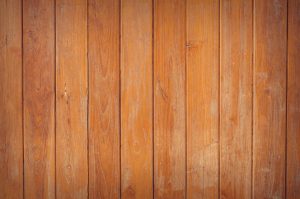Hanover’s Revolutionary Micro-Zone Cooling: How Smart Sensors Are Transforming AC Installation in Historic New England Homes
Revolutionary Micro-Zone Cooling Technology is Transforming How Historic Hanover Homes Stay Comfortable Year-Round
Historic New England homes are architectural treasures, but they present unique challenges when it comes to modern climate control. Between high costs, low efficiency, and installation projects that threaten to damage the integrity of historic homes, even the most seasoned preservationist has to struggle to retrofit a central air system into an old house. However, innovative micro-zone cooling systems equipped with smart sensors are revolutionizing how homeowners in Hanover, Massachusetts can achieve optimal comfort while preserving their home’s historic character.
The Challenge of Cooling Historic New England Homes
Historic homes usually do not accommodate modern air conditioning systems. The layout that most historic homes have makes it more challenging to install the appropriate type and size of HVAC system. Traditional cooling systems often require extensive ductwork modifications that can damage original architectural features, compromise structural integrity, or significantly alter the home’s appearance.
Many old homes are not properly insulated, which means that air from central cooling systems can leak out of them easily. While they can’t stop all air leakage in the home, small-duct systems like Unico can help ensure that individual rooms are cooled more evenly than conventional systems. This is where micro-zone cooling technology becomes a game-changer for historic properties.
How Smart Sensors Enable Micro-Zone Precision
Modern micro-zone cooling systems utilize advanced smart sensors to create customized comfort zones throughout historic homes. These systems, equipped with smart sensors customize an HVAC system to make them more energy and cost-efficient by monitoring their own performance and continually enhancing overall efficiency.
Adding a few smart vents allows for smart air supply and ventilation through sensors that tell whether or not a room is occupied and adjust room temperature, humidity and air circulation accordingly. This intelligent approach is particularly beneficial for historic homes where room usage patterns may vary significantly due to unique layouts and architectural features.
Smart thermostats work in conjunction with these sensor networks. For example, a smart thermostat can use sensors and pattern recognition to cool down your home when you’re driving home or stop cooling when you leave. If you’re a hot sleeper who usually wakes up to crank on the AC, your thermostat will learn this behavior and do it for you. It can also use the local weather information to predict how you’ll want your home to feel each day.
Preservation-Friendly Installation Solutions
The beauty of modern micro-zone systems lies in their minimal impact on historic structures. Unico’s ductwork also has one-third the surface area of conventional ducting, which saves space and can be installed with minimal disruption to historic homes’ walls. Outlets in individual rooms are about the size of a CD and can be designed to blend in seamlessly with ceilings and floors. Additionally, the Unico System only takes between one and two days to be installed; conventional heating and cooling systems can take weeks.
A feature that is unique to this system is its personalized temperature control that allows independent heating or cooling for different rooms or zones. A ductless mini-split may have multiple indoor air handlers, depending on the number of rooms or zones that need to be served. This flexibility makes them ideal for historic homes with irregular floor plans and varying ceiling heights.
Energy Efficiency and Cost Benefits
Homeowners investing in micro-zone cooling systems with smart sensors can expect significant energy savings. Add a smart thermostat as well and save anywhere from 12 to 15 percent on your heating and cooling costs as smart thermostats read and adjust according to ambient factors whereas older HVAC thermostats only measure.
Conventional systems lose 20 to 25 percent of their air from duct leaks, while small-duct systems like Unico lose close to zero percent of their conditioned air. Since these small-duct systems leak almost zero percent of their conditioned air, they are more energy- and cost-efficient than conventional systems throughout their lifespan.
Another advantage of ductless units is that they can be shut off in unused rooms or zones. This means you do not have to pay to heat or cool unused rooms. For historic homes with multiple rooms that may not be used regularly, this feature provides substantial cost savings.
Professional Installation Matters
When considering ac installation hanover homeowners should work with experienced professionals who understand both modern HVAC technology and historic preservation requirements. For over 30 years, families across Massachusetts have trusted us to keep their homes running efficiently and comfortably. With fast, same-day repairs, fully stocked trucks, and 24/7 emergency services, we’re here when you need us most—ensuring your home stays safe, comfortable, and stress-free.
Dempsey Energy is family-owned and values customer service. We understand Bristol County to the fullest. We value community and family, aiming for trust and transparency. Their expertise in working with historic properties ensures that modern comfort systems can be installed without compromising architectural integrity.
The Future of Historic Home Comfort
As technology continues to advance, micro-zone cooling systems with smart sensors represent the perfect balance between modern comfort and historic preservation. Selecting a capable air conditioning system for a historic home demands a delicate equilibrium between modern comfort and historic preservation. Whether your priorities lie in minimal modifications, energy efficiency, or eco-friendliness, these systems can aid in achieving an idyllic indoor climate while protecting the existing architecture.
For Hanover homeowners with historic properties, micro-zone cooling offers an unprecedented opportunity to enjoy year-round comfort while preserving the character and value of their architectural treasures. With smart sensors monitoring and adjusting conditions in real-time, these systems provide efficient, customized climate control that respects both modern comfort needs and historic preservation principles.
The revolution in micro-zone cooling technology means that historic home ownership no longer requires choosing between comfort and preservation – you can have both.


